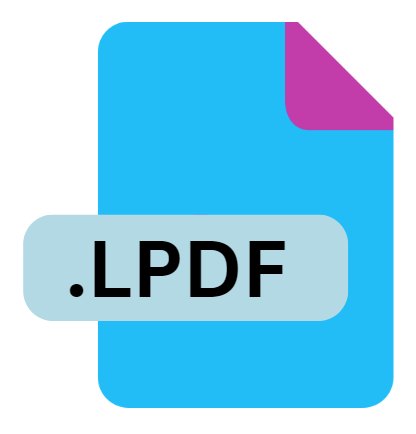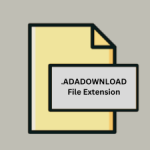.LPDF File Extension

Localized PDF File
| Developer | Apple |
| Popularity | |
| Category | Page Layout Files |
| Format | .LPDF |
| Cross Platform | Update Soon |
What is an LPDF file?
.LPDF file extension stands for Localized PDF File. This file type is a variant of the standard PDF (Portable Document Format) files, specifically designed to include localization features.
Localization in this context refers to the process of adapting a document to meet the language, cultural, and other specific requirements of a particular target market.
The .LPDF files are essential for ensuring that documents are accessible and relevant to diverse audiences worldwide, making them crucial in global communication, business, and publishing.
More Information.
The initial purpose of .LPDF files were to facilitate the distribution of documents that needed to be localized for different regions without creating separate files for each language or locale.
This format was particularly beneficial for multinational corporations, publishers, and educational institutions that required their documents to be accessible in multiple languages.
By embedding localization data within the PDF structure, .LPDF files allowed for more efficient document management and distribution, reducing the need for redundant files and ensuring consistency across different language versions.
Origin Of This File.
The .LPDF file extension was developed to address the increasing need for localized content in a globally connected world.
While the PDF format, developed by Adobe Systems in the early 1990s, revolutionized the way documents were shared and viewed, it lacked built-in support for localization.
As businesses expanded globally, the necessity for a file format that could handle multiple languages and regional adaptations within a single document became apparent.
This led to the development of the .LPDF file format, which incorporates features to support localized content seamlessly.
File Structure Technical Specification.
An .LPDF file is structured similarly to a standard PDF file but with additional layers of data for localization. The key components of an .LPDF file includes:
- Document Content: The primary text, images, and graphics of the document.
- Localization Layers: These layers contain translations, localized graphics, and other regional adaptations.
- Metadata: Information about the document, such as author, title, language codes, and versioning data.
- Font and Resource Embedding: Ensures that the correct fonts and resources are available for each localized version.
- Interactive Elements: Forms, links, and other interactive elements that are localized as needed.
Technical Specifications
- File Extension: .lpdf
- MIME Type: application/vnd.lpdf
- Base Format: PDF (ISO 32000-1:2008 standard)
- Localization Support: Multiple language support with embedded localization data.
- Compression: Supports standard PDF compression methods, such as ZIP and JPEG compression for images.
- Encryption: Can utilize standard PDF encryption methods to secure localized content.
How to Convert the File?
Converting a standard PDF to an LPDF involves several steps:
- Preparation of Content: Prepare the localized versions of the content for each language and region you intend to support.
- Use of PDF Creation Tools: Utilize specialized PDF creation tools or software that supports the creation of LPDF files. Adobe Acrobat Pro, for example, provides features for adding localized content and metadata.
- Embedding Localized Content: Embed the localized content within the PDF, ensuring that each version is tagged appropriately.
- Adding Localization Metadata: Include metadata that specifies the available languages and regional settings, ensuring that the correct version of the content is displayed based on the user’s settings.
- Validation: Validate the LPDF file to ensure that all content is correctly embedded and that the file functions as expected across different PDF readers and platforms.
Advantages And Disadvantages.
Advantages
- Centralized Localization: Allows multiple localized versions to be managed within a single file.
- Consistency: Ensures that all localized versions maintain the same layout and design.
- Efficiency: Reduces the need for creating and managing separate files for each language.
- Accessibility: Facilitates easier distribution and access to localized documents.
- Standardization: Builds on the widely accepted PDF format, ensuring compatibility with existing PDF viewers and tools.
Disadvantages
- File Size: Embedding multiple localized versions can increase the file size significantly.
- Complexity: Managing localization layers and ensuring correct display can be complex.
- Limited Tool Support: Not all PDF viewers and editors fully support .LPDF features.
- Performance: Opening and rendering localized content might be slower on older devices.
How to Open LPDF?
Open In Windows
- Adobe Acrobat Reader: The most reliable software for opening LPDF files on Windows is Adobe Acrobat Reader. It fully supports the PDF format and its extensions, including LPDF.
- Foxit Reader: Another popular PDF reader that supports LPDF files, providing good performance and additional features.
Open In Linux
- Okular: A versatile document viewer that supports a wide range of file formats, including LPDF.
- Evince: Another popular document viewer on Linux that can open LPDF files, though it may have limited support for some advanced localization features.
Open In MAC
- Preview: The default PDF viewer on macOS, Preview, can open LPDF files. However, for full support of all localization features, Adobe Acrobat Reader is recommended.
- Adobe Acrobat Reader: As with Windows, Adobe Acrobat Reader is a robust choice for opening LPDF files on macOS.













